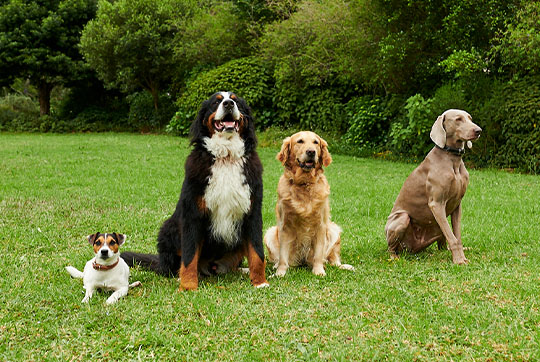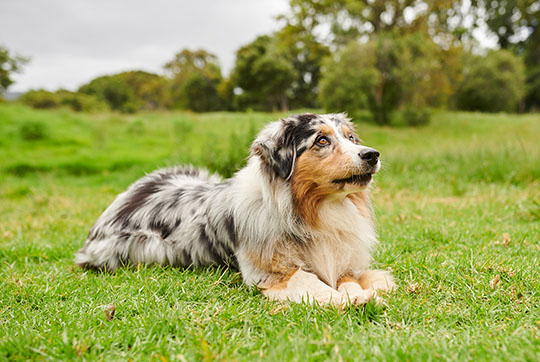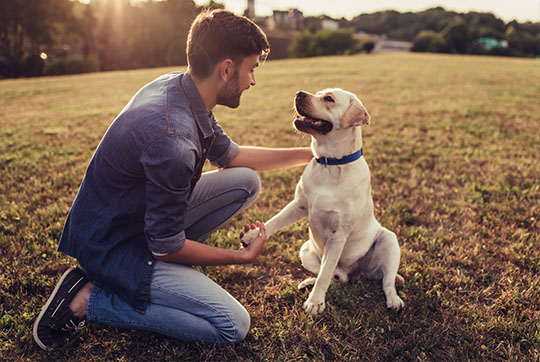Most dogs moult twice a year. During this process, you should provide your dog with the best possible support.
Moulting in dogs
Why do dogs moult?
It is easy to imagine why dogs lose their thick winter coat in spring. After all, dogs hardly sweat at all, and therefore have to shed both their warm undercoat and thick outer coat. But why in autumn? They could theoretically simply keep their new summer coat and allow a small amount of new hair to grow back. Unfortunately this is not possible, because first of all, space has to be provided to allow the new fur to grow. As the winter coat is usually much bulkier than the summer coat, many dog owners have a difficult time in the spring.

Do all dogs moult?
Moulting takes place in dogs to very different degrees. Some have virtually no loss of hair, while others lose a great deal. This is mainly due to the very different coat structure of our dogs: If you have a poodle, a Labradoodle or a Yorkshire terrier, the topic of moulting will be fairly unimportant for you. Because these dogs shed next to no hair. In these breeds, the typical moulting process in spring and autumn is more or less non-existent. Grooming, however, is always essential. Depending on the structure of the coat, it has to be cut, shaved or trimmed.

What triggers moulting?
The dog’s moulting is triggered by the length of daylight and the temperature. The more a dog stays outside, the more it will feel the changes and will react to them. On average, our winters are no longer as cold as they used to be. As a result, a winter coat is required for a shorter length of time, if at all. Some dogs shed hair more or less evenly all year round with some slight peaks. This not only applies to “house dogs”, but often also to neutered male dogs. In contrast, female dogs often shed more hair before being on heat.

How long does the moulting process last?
The length and nature of the moulting process depend primarily on the breed, the coat structure and the age of the dog. On average, it lasts six to seven weeks.
Problems with moulting in dogs
In most dogs, moulting takes place without any complications. Sometimes, however, difficulties can arise: bald patches in the fur, a dull coat or increased dandruff are just a few examples. In these and similar cases you should take your dog to the vet.

Supporting your dog when moulting
Daily grooming is very important, especially during moulting. Daily care does, of course mean that less hair is spread around the home. It is also a way to actively help your dog during the moulting process, because the organism is more subject to stress at this time. This is, of course, also dependent on the coat: short-haired breeds such as Whippets or Boxers have it very easy. Moulting in dogs with a light undercoat, such as German Shepherds or Labradors, is a little more complex. Support is most important, however, for dogs with long hair and a dense undercoat like the Spitz or Newfoundland.
Grooming a dog
Grooming depends, among other things, on how much undercoat a dog possesses, if at all. The more undercoat there is, the more important it is to use different grooming utensils. It is best to ask the breeder what type of brushes, combs and grooming gloves are suitable. A special technique is required for dogs with wiry hair, which have to be trimmed. This special plucking technique is not for everyone, as are clipping or shaving a dog with curls. This special type of grooming is always best left to the experts.
